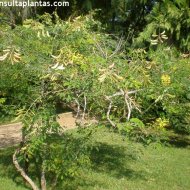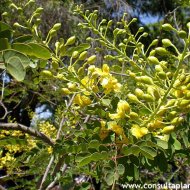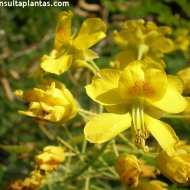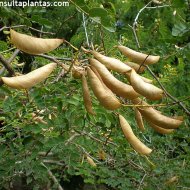Care of the tree Caesalpinia mexicana or Mexican Bird of Paradise |
|
The genus Caesalpinia, family Fabaceae, includes about 100 species of shrubs and trees native to tropical and temperate regions of the entire planet. Some species are: Caesalpinia mexicana, Caesalpinia spinosa, Caesalpinia gilliesii, Caesalpinia vernalis, Caesalpinia japonica, Caesalpinia pulcherrima. Common names: Mexican bird of paradise, Mexican Caesalpinia, Mexican holdback, Mexican Poinciana, Bird of Paradise Shrub, Yellow Bird of Paradise Shrub, Desert Bird of Paradise Shrub. Scientific synonyms: Poinciana mexicana, Erythrostemon mexicanus. This species is native to Mexico. They are trees or shrubs with a rounded habit and relatively fast growth that reach 3.5 meters (11.48 feet) in height and width. The compound bipinnate leaves are dark green above and light green below; They can lose their leaves in the cold. They produce showy clusters of yellow flowers. They bloom in summer and early fall. The fruits are large 6 cm long pods that are toxic if swallowed. Mexican bird of paradise is used as isolated specimens, in bushy groups and in rows. It's ideal for frost-free Mediterranean gardens. Caesalpinia mexicana prefers full sun exposure and a warm climate; in semi-shade it will produce fewer flowers. It resists light and occasional frosts. The soil can be a normal well-drained garden soil with coarse sand and containing a little organic matter. Water moderately waiting for the substrate to dry. Established plants withstand drought well. Fertilize with a little compost at the end of winter. Prune lightly at the end of winter to maintain a rounded habit. Mexican Poinciana is a plant resistant to the usual pests and diseases. Bird of Paradise Shrub is propagated from seeds sown in fall or spring and by softwood cuttings. |
Images of the tree Caesalpinia mexicana or Mexican Bird of Paradise |
Find plants
Caesalpinia mexicana or Mexican Bird of Paradise | Care and Growing
© 2025 FavThemes





